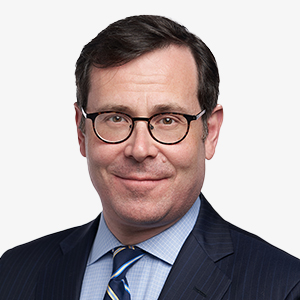Sustainable Equity Fund
Mutual Funds | Equities
Sustainable Equity Fund
YTD RETURN
0.00%
Why Invest
Pioneer in ESG Investing
One of the first mainstream investment firms to launch an ESG-dedicated mutual fund in 1989
Deep Involvement in Industry Ecosystem
Seeks to act as an advocate and resource for sustainability initiatives
Active Ownership Approach
Utilize persistent and direct engagement with companies in an effort to drive sustainability
Making Sense of the Mudslinging
What ESG, sustainable investment and impact investment mean at Neuberger Berman, and how they are consistent with active management and the diverse needs of our clients
Read MoreMorningstar Rating
For each retail mutual fund with at least a three-year history, Morningstar calculates a Morningstar Rating based on a Morningstar Risk-Adjusted Return measure that accounts for variation in a fund’s monthly performance (including the effects of sales charges, loads, and redemption fees), placing more emphasis on downward variations and rewarding consistent performance. The top 10% of funds in each category receive five stars, the next 22.5% receive four stars, the next 35% receive three stars, the next 22.5% receive two stars and the bottom 10% receive one star. (Each share class is counted as a fraction of one fund within this scale and rated separately, which may cause slight variations in the distribution percentages.) The Overall Morningstar Rating for a retail mutual fund is derived from a weighted average of the performance figures associated with its three-, five- and ten-year (if applicable) Morningstar Rating metrics. Ratings are ©2024 Morningstar, Inc. All Rights Reserved. The information contained herein: (1) is proprietary to Morningstar and/or its content providers; (2) may not be copied or distributed; and (3) is not warranted to be accurate, complete or timely. Neither Morningstar nor its content providers are responsible for any damages or losses arising from any use of this information.
Top 10 Holdings
Portfolio holdings are expressed as a percentage and are calculated by taking the market value of each holding and dividing it by the Fund's NAV. Portfolio holdings and other characteristics are current as of the date shown and are subject to change.
Gross expense represents the total annual operating expenses that shareholders pay (after the effect of fee waivers and/or expense reimbursement, if any). The Fund’s Investment Manager (the “Manager”) has contractually undertaken to waive and/or reimburse certain fees and expenses of the Fund so that the total annual operating expenses are capped (excluding interest, brokerage commissions, acquired fund fees and expenses, taxes including any expenses relating to tax reclaims, dividend and interest expenses relating to short sales, and extraordinary expenses, if any) through 08/31/2027 for Institutional Class at 0.75%, 1.11% for Class A, 1.86% for Class C, 1.36% for Class R3, 0.65% for Class R6 and 1.50% for Trust Class (each as a % of average net assets). As of the Fund’s most recent prospectuses, the Manager was not required to waive or reimburse any expenses pursuant to this arrangement. Absent such arrangements, which cannot be changed without Board approval, the returns may have been lower. Information as of the most recent prospectuses dated December 18, 2023, as amended and supplemented.
Beta is a measure of market-related risk (expressed between 0-1%) of a portfolio compared to that of the overall market, as represented by an index. The lower the beta the lower the sensitivity to the movements of the market, as represented by the index.
Standard Deviation is a statistical measure of portfolio risk. The Standard Deviation describes the average deviation of the portfolio returns from the mean portfolio return over a certain period of time. Standard Deviation measures how wide this range of returns typically is. The wider the typical range of returns, the higher the Standard Deviation of returns, and the higher the portfolio risk.
Up Capture Ratio is a measure of the manager’s performance in up markets relative to the market itself. A value of 110 suggests the manager performs ten percent better than the market when the market is up. During the selected time period, the return for the market for each period is considered an up market period if it is greater than zero. The returns for the manager and the market for all up periods are calculated. The Upside Capture Ratio is calculated by dividing the return of the manager during the up market periods by the return of the market during the same periods.
Down Capture Ratio is a measure of the manager’s performance in down markets relative to the market itself. A value of 90 suggests the manager’s loss is only nine tenths of the market’s loss. During the selected time period the return for the market for each period is considered a down market period if it is less than zero. The returns for the manager and the market for all down periods are calculated. The Downside Capture Ratio is calculated by dividing the return of the manager during the down periods by the return of the market during the same periods. Active Share measures the percentage of mutual fund assets that are invested differently from the benchmark, and will range between 0% and 100%, Funds with an active share below 20% are likely to be pure index funds, while those with an active share between 20% and 60% are considered to be closet index funds.

